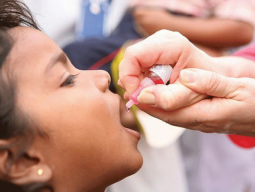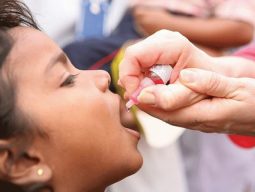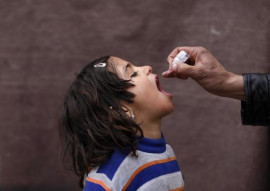
The polio virus had been eradicated from across the world except for Pakistan and Afghanistan. The number of polio virus cases in Pakistan had been curtailed from 306 in 2014 to just six in 2018. However, the tests results of the environmental samples collected from different parts of the country were positive of carrying the virus.
A health official of the polio eradication programme told The Express Tribune that the fight against polio was in the last round as the cases had sharply dropped to only six this year.
“Many years ago, the polio eradication programme had anticipated to curb the threat of the virus within a year but the killing of polio workers and security personnel deployed for their protection resulted in the outbreak of 306 cases in 2014,” he said.
He said that about 45 people had lost their lives in the fight against the virus since December 2012 when the first anti-polio worker was killed in South Waziristan. He said that the virus travelled between Pakistan and Afghanistan and added that most of the times the genetically sequencing of the poliovirus in Pakistan was traced back to Afghanistan and from Afghanistan to Pakistan.
According to health officials, the environmental samples recently collected from Kohat were traced back to Khyber.
“The virus was further traced back to Nangarhar, Afghanistan,” said another senior official, adding that the environment samples recently collected in Nowshera were tested positive for carrying the virus. Nowshera’s samples, he added, were traced back to Kohat and then later matched with the samples collected from Bajur.
Moreover, the health officials said that the samples from Peshawar had positive tests for around a year. Similarly, the environmental samples from Quetta were traced back to Qandahar and the samples collected from Gadap were traced back to Quetta.
This made two major blocks in Pakistan, including the Quetta-Qandahar and Hilmand block and Ningrahar-Jalalabad-Peshawar block.
Meanwhile, officials at the National Emergency Operation Centre (NEOC) said the most important factor that contributed the most to the virus circulation from Afghanistan into Pakistan was the cross-border movement of the people.
Coordinator NEOC Dr Rana Safdar described Peshawar and Gadap as major reservoirs of the polio virus. Speaking to The Express Tribune, he said that repeated vaccinations had been protecting children from virus.
Referring to the stool sample tests on different children, Dr Safdar said the tests were positive but the children were able to resist the virus because their immunity was strong enough.
A total of six cases had been confirmed in 2018, with one in Sindh, two in Khyber-Pakhtunkhwa and three in Balochistan.


















1714107664-0/putinfar-(1)1714107664-0-270x192.webp)














1714024018-0/ModiLara-(1)1714024018-0-270x192.webp)






COMMENTS
Comments are moderated and generally will be posted if they are on-topic and not abusive.
For more information, please see our Comments FAQ